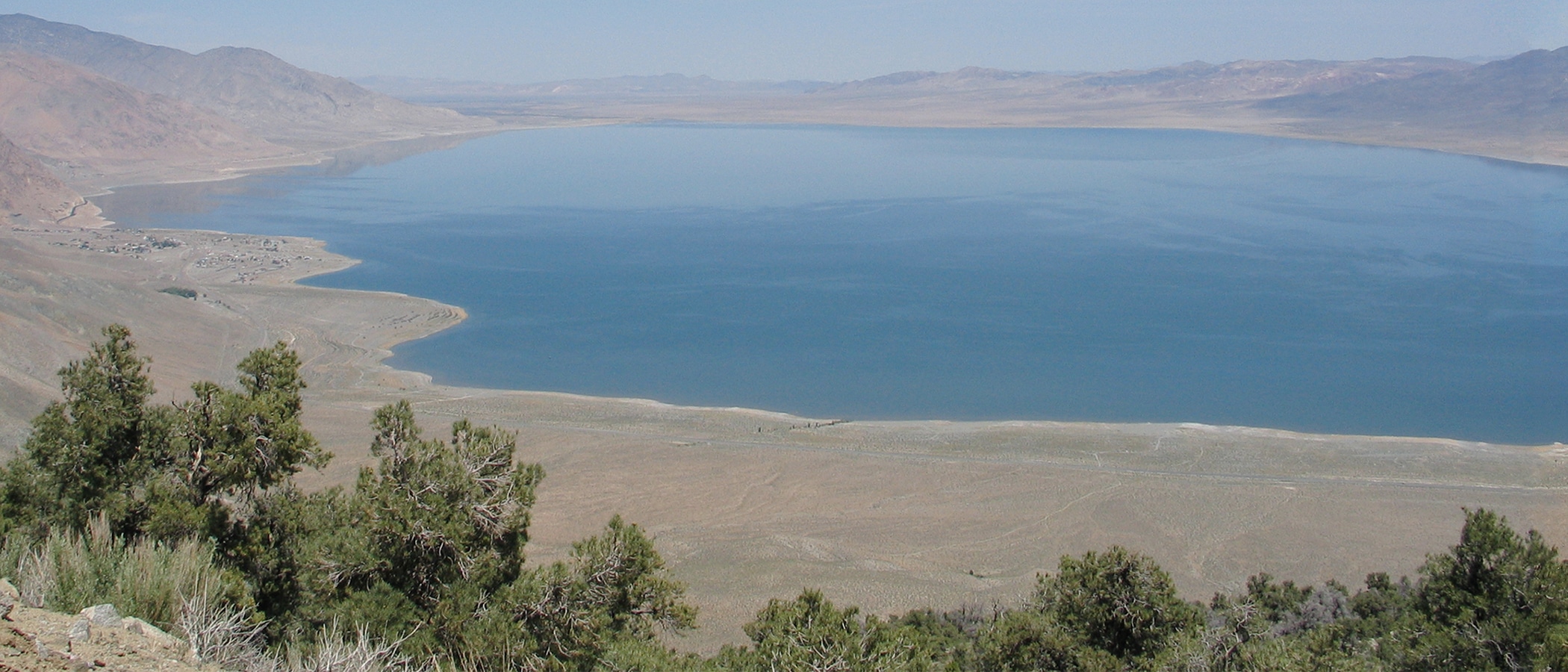
The Walker Basin Conservancy, a pioneer in the use of market-based environmental solutions, recently announced another successful water and land acquisition in Smith Valley, Nevada. This deal included 320 acres of Walker River corridor, 3.6 cubic feet per second of decreed water flows, and 635 acre-feet of storage water rights. This transaction means that the Conservancy has acquired 55% of the total 50,000 acre-feet necessary to restore Walker Lake’s native fishery of Lahontan cutthroat trout and tui chub.
The Walker Lake Working Group, in conjunction with Mineral County, Nevada, has been paying legal fees involved with the precedent-setting Walker Lake public trust trial. Their attorney, Simeon Herskovits of the firm Advocates for Community and Environment, recently sent this update:
We are well into the discovery process, which is meant to help develop our claims and defenses to those claims. We have been working over the past several months with our expert witnesses: A hydrologist who has studied the hydrology of the Walker River system and the history of over-appropriation. Two retired Nevada Division of Wildlife biologists, one specializing in fisheries and one in migratory birds, who will provide the history of the Walker Lake fishery, including a description of the fishery when it was healthy and the decline of the same, and the history of migratory birds use of Walker Lake.
The legal battle to save Walker Lake is finally proceeding on schedule. It has reached about the same point as the battle to save Mono Lake did in the early 1990s when scientists and researchers assembled the factual evidence that led the State Water Board to protect Mono Lake by issuing Decision 1631. Hopefully a similar decision in the Walker Lake trial will establish precedents that will protect the public trust resources of Walker Lake and throughout the State of Nevada.
Click here to donate to the Walker Lake Working Group.
Top image: USGS Public Domain.
